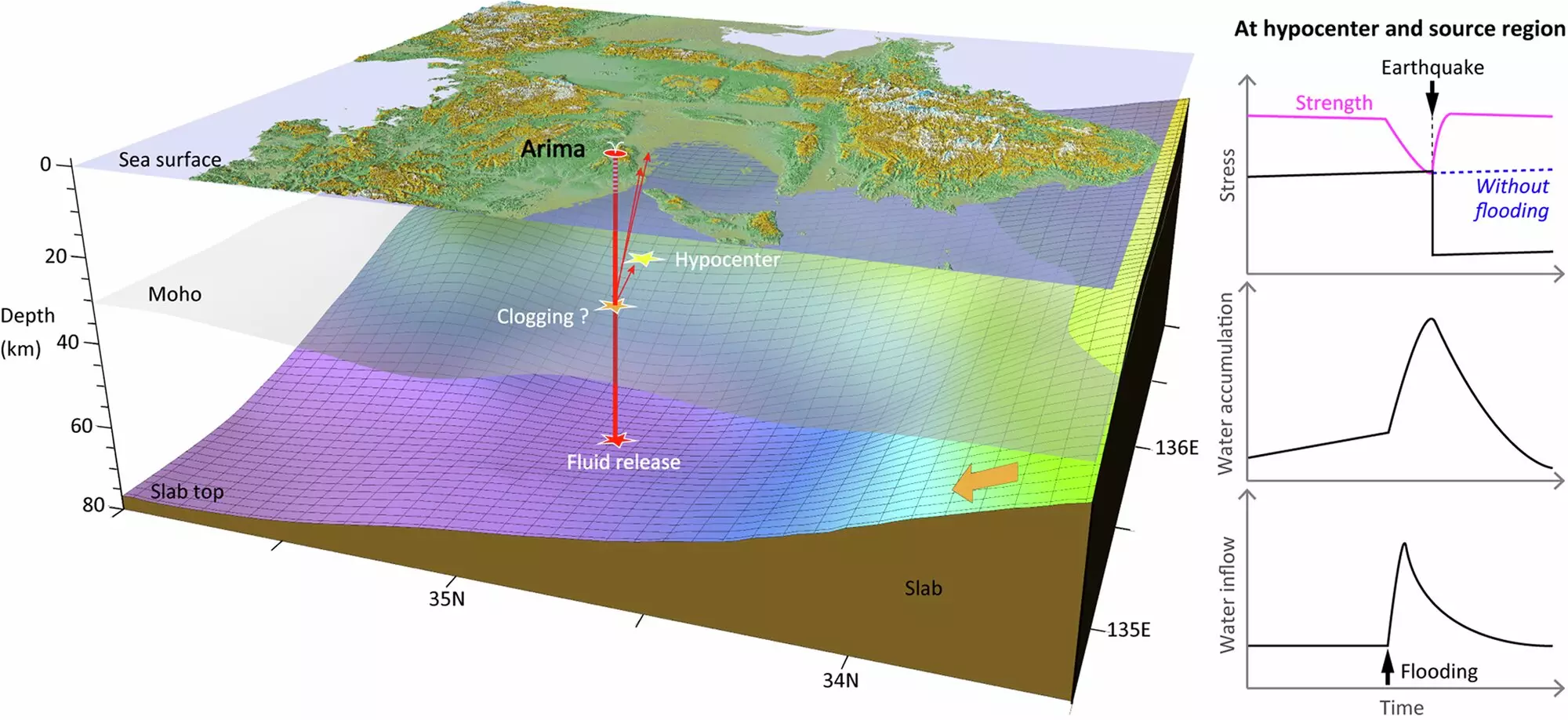The seismic events that shape our world are often attributed to the intricate movements of tectonic plates. However, recent research has begun to unveil alternative triggers, notably deep groundwater dynamics. A pivotal study conducted by researchers at the University of Tsukuba has uncovered compelling evidence suggesting that the catastrophic Kobe earthquake of 1995 may have its roots in underground water flooding beneath the famous Arima Hot Springs. This finding challenges traditional earthquake causality, proposing that water from the subducting Philippine Sea Plate may have played a crucial role.
The investigative efforts centered around thorough isotopic analyses of the hot spring water, focusing particularly on stable hydrogen and oxygen isotopes, alongside chloride ion concentrations, collected over several decades. The unique salinity of the Arima Hot Springs, which is more than double that of seawater, raises intriguing questions about its origins; notably, researchers suggest that this distinctive water composition is indicative of an underlying influence of the Philippine Sea Plate. Although the connection seems plausible, the absence of direct evidence necessitates caution in establishing a definitive causal relationship.
The research, published in *Communications Earth & Environment*, sheds more light on this connection. Remarkably, the isotopic ratios of the water found beneath Arima matched those predicted by numerical modeling when accounting for plate-derived influences. The study also revealed a notable trend: after the advent of deep well drilling in the 1940s, plate-derived water proportions showed a significant decline but experienced a sudden spike around the time of the 1995 earthquake. This finding, particularly concerning three of the seven springs analyzed, draws attention to patterns that may serve as precursors to seismic activity.
Such correlations have drawn parallels with previously noted precursors to the Kobe earthquake, including increased concentrations of chloride ions and radon in surrounding groundwater. Researchers estimate that the surge of plate-derived water during this period reached volumes exceeding 100,000 cubic meters, a potential factor in compromising local fault structures and contributing to the earthquake’s occurrence. This notion extends beyond Arima; similar patterns were also observed during the Matsushiro earthquake swarm of 1965-67, further reinforcing the hypothesis that monitoring groundwater dynamics could unveil critical insights into earthquake prediction.
As urban areas across the globe increasingly grapple with the threat of seismic events, the study of hydrological factors offers a promising avenue for enhancing earthquake forecasting methodologies. By integrating hydrological monitoring with traditional geological assessments, researchers could develop a more comprehensive understanding of the conditions leading up to catastrophic ground shaking. Ultimately, the findings from the University of Tsukuba present a compelling argument for reconsidering the multifaceted causes of earthquakes, bringing to the forefront the often-overlooked role of groundwater in seismic risk management.

